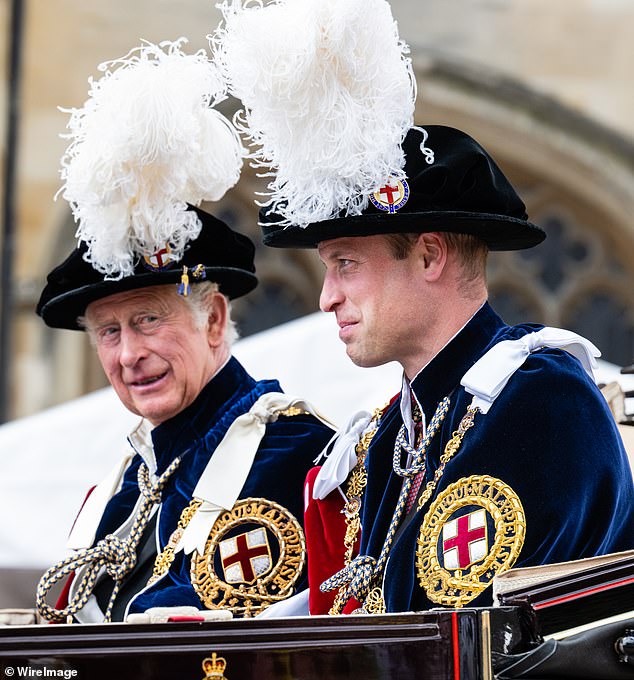For most people, wealth is a distant dream. But for King Charles, even riches come with their own set of complications — and responsibilities.
Behind the polished façade of Buckingham Palace, the monarch has been quietly reshaping the royal household, cutting costs, and facing difficult questions about money, transparency, and the future of the monarchy itself.
From Prince to King: A Life of Privilege and Pressure
Before ascending the throne, Charles wasn’t exactly impressed with his own fortune.
When critics questioned his multimillion-pound earnings from the Duchy of Cornwall, he reportedly lamented that it was worth “only about £1 billion,” with much of its land in less desirable areas like Kennington rather than elite districts such as Belgravia.
His friend, the late Duke of Westminster, left behind a £9 billion empire to his son Hugh in 2016, instantly making him one of Britain’s richest men.
For Charles, the comparison was a reminder that royal wealth isn’t always as vast or straightforward as it seems.
A King on a Mission to Cut Costs
Despite his taste for luxury — something that once irked his father, Prince Philip — Charles has taken a surprisingly frugal approach to running the monarchy.
Now 77, he’s aware his reign won’t be as long as his mother’s, and he’s determined to leave behind a more efficient institution.
Upon becoming King, Charles moved swiftly to streamline the Royal Household.
He told senior staff — including Vice-Admiral Sir Tony Johnstone-Burt and Sir Michael Stevens — that the palace was bloated and needed immediate reform.
The message was blunt: too many advisers, too little action.
“Value for money” became the new royal mantra. Long-serving courtiers who were used to a slower pace found themselves under pressure to deliver results quickly.
Ending the Era of Royal Freeloaders
Among Charles’s most controversial reforms has been his stance on non-working royals.
Nieces Princess Beatrice and Princess Eugenie, along with other extended family members, have been told to fund their own lifestyles.
Subsidised royal apartments are being phased out and will soon be rented at market rates.
“The King isn’t running a housing association for distant relatives,” one insider remarked.
The eviction of Prince Harry and Meghan Markle from Frogmore Cottage was just the start.
Their removal, announced after the release of Harry’s memoir Spare, symbolised a broader shift — a monarchy where every privilege must now have purpose.
The Push for Efficiency Inside the Palace
Charles’s efforts aren’t just about money — they’re about fairness.
He wants better pay for junior staff and fewer overpaid managers.
The palace, he felt, had been “run like a hotel — and not a very good one.”
This drive for reform has created tension but also results.
Staff cuts have already begun, and operations are reportedly smoother.
“Less is more,” one royal aide explained. “It’s not about financial cuts — it’s about making the system work.”
Prince William’s Watchful Eye
Charles’s approach has influenced his son, Prince William, who now oversees the Duchy of Cornwall.
Unlike his father, William closely monitors the estate’s finances, attending every meeting and asking sharp questions.
In 2024, he earned over £23 million from the Duchy, but unlike his father, he refuses to reveal how much tax he pays.
The new Prince of Wales guards his privacy fiercely, preferring discretion over disclosure.
Counting the Real Cost of the Monarchy
This year, the Sovereign Grant — the official public funding of the monarchy — rose by 53 percent to £132.1 million, with £34 million earmarked for Buckingham Palace’s ongoing renovation.
Critics argue the increase highlights the need for a full financial audit of royal spending.
Anti-monarchy group Republic estimates the true cost of the monarchy could exceed £510 million once hidden expenses, military secondments, and security are factored in.
Two of Charles’s valets, for instance, are reportedly paid by the Ministry of Defence.
Even the Royal Logistics Corps is used to move the King’s luggage.
Are the Royals Paying Their Way?
Supporters of the monarchy often argue it boosts tourism and British soft power.
Indeed, millions visit royal landmarks each year.
Yet, the numbers tell a different story — Versailles in France, a palace long without royalty, draws nearly 10 million visitors annually, compared to around 550,000 for Buckingham Palace.
So, does the monarchy really pay for itself? The truth, many experts say, is unclear.
Hidden Wealth and Public Scrutiny
The royals’ private estates — the Duchy of Lancaster and the Duchy of Cornwall — remain shrouded in secrecy.
Both have earned millions renting property to NHS hospitals, schools, and even prisons.
While the arrangements are legal, they’ve been criticized as morally questionable, especially when public funds are involved.
Investigations have also revealed that unclaimed estates — properties of people who die without heirs — often end up enriching the duchies rather than going to charity, as once promised.
Transparency and Trust in the Modern Monarchy
Despite growing calls for openness, King Charles has resisted efforts to make royal finances more transparent.
His stance has frustrated reform advocates who believe secrecy undermines public trust.
Former MP Norman Baker has called for sweeping reforms, describing the monarchy as Britain’s “last imperial institution.”
Meanwhile, others argue that while no laws are broken, the lack of clarity erodes confidence in an already strained relationship between the Crown and its people.
A Crown at a Crossroads
In 2025, the monarchy faces a defining moment.
For older generations, the royal family represents stability and tradition.
or younger Britons, it often feels outdated and distant.
Charles’s challenge is to bridge that gap — to show that the monarchy can still serve a modern purpose without losing its mystique.
But without greater transparency and accountability, the risk is clear: the institution may not collapse, but it could fade quietly into irrelevance.
Legacy and spectacle once sustained the Crown. Now, its future depends on something far more fragile — the trust of its people.
Share on Facebook «||» Share on Twitter «||» Share on Reddit «||» Share on LinkedIn
